Osteoarthritis of the hip joint, otherwise known as coxarthrosis, is one of the most serious diseases of modern man, often leading to injury. Its first manifestations - mild groin pain - are usually ignored. The patient seeks qualified medical care, as a rule, when drug treatment is ineffective and endoprosthesis is required.
Causes
Osteoarthritis of the hip joint occurs due to a combination of different, unfavorable circumstances. Microtraumas and complete injuries account for about one-fifth of the total number of patients (average 10-20%).
Other causes of osteoarthritis of the hip include:
- Excessive load.
- Heart attack or aseptic necrosis of the hip joint.
- Prolonged stress, prolonged depression.
- Overweight.
- Heredity.
- Congenital anomalies and underdevelopment.
- Inflammatory processes in the joints.
- Hormonal background failure.
Overload
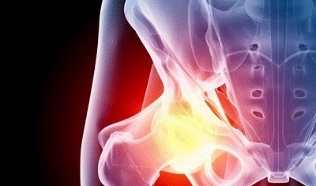
Until recently, excessive physical activity, long hours of walking, hard work (as a loader) were thought to be the main causes of osteoarthritis. But it's not like that.
A healthy joint that has never been injured perfectly tolerates any stress, especially at a young age, and nothing happens to it.
But if ever, even in childhood, there were microtraumas, then such a joint is a candidate for the development of coxarthrosis. For this reason, the disease occurs in 20-30% of cases.
Heart attack
This is a disorder of blood flow in the joint. In other words, the disease is called aseptic necrosis of the hip joint, which usually occurs after an injury.
In addition to injury, the cause of a heart attack can be:
- Excessive alcohol consumption.
- Frequent injections of corticosteroids.
- Unexpected shock (severe stress).
- Excessive, one-time charges at a time when one is not ready for them.
Heart attack becomes one of the causes of coxarthrosis quite often - in 10-30% of cases.
Prolonged stress
Few people believe in psychosomatics. Prolonged experiences, depression, lack of understanding in the family and various phobias that arise against this background are a shortcut to joint problems, not just the hip joint. The incidence of osteoarthritis for this reason is very high - up to 50.
The mechanism of action of the disease in this situation is simple. During prolonged depression, the patient's body produces stress hormones, which belong to the group of corticosteroids. The longer a person is in this state, the higher its concentration in the blood. Corticosteroids inhibit the production of hyaluronic acid, which is a major component of joint fluid. If it is not produced enough or its composition changes, the cartilage is slightly moistened, dries, covered with a network of small cracks.
Stress hormone reduces the permeability of capillaries while disrupting blood circulation in the joints.
Overweight
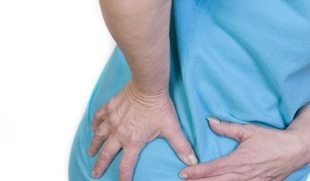
is an additional factor among other causes of osteoarthritis of the hip (coxarthrosis).
Overweight people put a lot of stress on their joints, especially the ankles, knees and thighs.
While they were young, everything seemed to work within normal limits. But with age, remaining the same weight, joint problems will grow like a snowball.
Heredity
If one of your relatives has suffered from osteoarthritis, you do not need to get sick at all. However, the appearance of "wounds" is influenced by the characteristics of metabolism, the structure of cartilage and they can be inherited. This includes the weakness of the muscular system. For this reason, coxarthrosis can be won only in 10% of cases. And it is far from the fact that this will happen. The main thing is to undergo regular examinations and monitor the condition of your joints.
Congenital anomaly
This is usually treated in early childhood, allowing the child to grow up and use the limb normally. However, the presence of an anomaly is always a risk of getting coxarthrosis, especially if you do not monitor the condition of your joints. The frequency is small - only 5. Not to be overlooked is the fact that only a combination of several causes leads to osteoarthritis of the hip.
Inflammation of the joints
This process is usually called arthritis. The disease provokes the appearance of secondary coxarthrosis in 2-3% of cases. The inflammatory process changes the quality of the intra-articular fluid. It becomes more viscous and ceases to perform its direct functions. As a result, the cartilage rubs against the cartilage, gradually collapsing.
Among other causes, directly or indirectly affecting the occurrence of coxarthrosis, can be called hormonal changes in menopause, metabolic diseases (diabetes), nervous diseases (in which the sensitivity of the lower extremities is lost), osteoporosis.
Symptoms
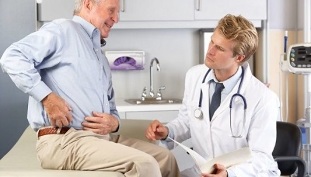
Osteoarthritis of the hip joint manifests itself in different ways. At the first stage of the development of the patient's pathology, almost nothing bothers him, except for slight unpleasant, sometimes painful, passing independently, sensations.
The symptoms of osteoarthritis of the hip are specific and allow a preliminary conclusion (for diagnosis) at the stage of the study:
- Groin pain. This is the main symptom of the disease. If you feel something is wrong in this area while driving, try to see a doctor as soon as possible. Groin pain usually travels to the front or side of the thigh and can radiate to the buttocks or knee. It is extremely rare for the pain of osteoarthritis of the hip to reach the middle of the calf muscle. The patient experiences discomfort during sinking in a chair or getting up or after a long walk.
- Limited mobility. This symptom signals that osteoarthritis of the hip (coxarthrosis) is already progressing. If you ask such a patient to sit on a pole, that is, backwards, he will hardly be able to do so.
- Crunching of the hip joint when walking. It does not appear immediately, but with the progression of osteoarthritis and the destruction of cartilage. Its difference from the usual crunching of a healthy joint is a rather dry sound and a pain syndrome of low or moderate intensity.
- Shortening of the diseased limb. It occurs when the disease is already advanced enough.
- Lameness, falling of an inflamed leg due to the fact that there is partial or complete destruction of cartilage.
- Muscular atrophy of the affected leg. Visually it looks dry and unhealthy.
- Knee pain due to muscle atrophy.
Diagnostics
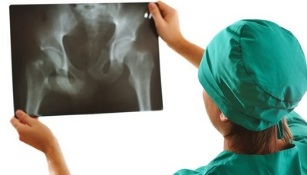
This time is not too long for the patient. After a visual examination and questioning of the patient, the doctor prescribes a referral for blood donation - general analysis, biochemistry and rheumatic test. This is done in order to exclude the inflammatory process in the body. In osteoarthritis, all indicators are close to normal.
The next step is instrumental exams:
- X-ray and / or CT.Computed tomography shows the joints a little better.
- NMR. Appointed first. Such a study is as informative as possible.
- Ultrasound of the joints.A sign of coxarthrosis in this study is a clear thinning of cartilage. However, the accuracy of the result largely depends on the qualification of the specialist who deciphers the data obtained. Therefore, to diagnose the disease, it is prescribed in rare cases.
Consequences
If osteoarthritis of the hip is not treated, hoping that "it may go away on its own, " the disease will progress actively. The consequences of such indifference to oneself are expressed in muscle atrophy and obvious shortening and drying of the diseased limb, at some point a person will not be able to move independently. The pain syndrome will become a constant companion of such a patient; even strong painkillers can't relieve it. The only way out of this situation will be a joint replacement operation - endoprosthesis.
If an adult patient is diagnosed with coxarthrosis, treatment should begin immediately. Sedentary lifestyle, which invariably occurs in a patient due to severe constant pain, significantly shortens life.
Traditional treatment
It can be categorized as medical and surgical. The second is used in the case when the first does not lead to significant improvement with prolonged use.
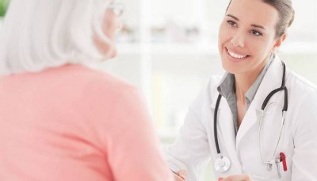
Coxarthrosis in the early stages is quite treatable:
- Medicines.
- Manual therapy.
- Traction on a special table.
- With PIR (relaxation after measurement).
- Therapeutic massage.
- Hirudotherapy.
- Therapeutic gymnastics.
Medicines
The task of drugs is multifaceted. Not only tablets are used, but also ointments, intra-articular injections. The tablets (capsules, sachets) are prescribed to relieve pain (non-steroidal anti-inflammatory drugs), improve the nutrition of cartilage and improve the quality of intra-articular lubrication (chondroprotectors), relieve muscle spasm (muscle relaxants).
Ointments and creams have the weakest effect and are used for warming and irritation. Their effect is close to placebo. At the moment of friction, the patient's body produces endorphins - hormones of pleasure and they are quite effective in relieving pain.
Intra-articular injections for osteoarthritis of the hip are very rare. This is due to the narrow joint space, which is quite difficult to enter, even with the use of special ancillary equipment. The procedure is performed through the groin and is so complicated that ninety-nine percent of doctors prefer to inject drugs into the periarticular sac by making a puncture on the side of the thigh.
By injection:
- Relieve high-intensity pain syndrome (corticosteroids).
- They nourish cartilage (chondroprotectors).
- Improves the quality of the lubricant (hyaluronic acid substitutes - injected through the groin).
Non-steroidal anti-inflammatory drugs are administered orally for mild to moderate pain. They also effectively suppress inflammatory processes.
Manual therapy
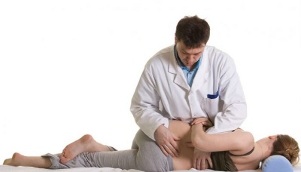
Treatment by an experienced specialist can put patients with moderate coxarthrosis on their feet. The doctor's task is to restore joint mobility, to relieve pain. Manual therapy is subdivided into manipulation (single effect on the joint) and mobilization (4 courses per year, 3-4 sessions each).
Mobilization allows you to stretch the affected limb with minimal pain. Increase joint space, relax tight muscles. The manipulation is permissible only in the early stages of the disease.
Adhesion to a special table also gives certain results, but significantly loses from manual therapy. The machine (device), unlike the doctor's hands, does not feel the patient and, if used incorrectly, can cause harm.
PIR
Postisometric relaxation involves active interaction between the patient and the treating physician. The meaning of the method is that the patient relaxes / tenses certain muscle groups according to the instructions of a specialist. At this point, the doctor stretches his ligaments and joints.
This treatment for coxarthrosis helps relieve muscle spasms. The method is effective in coxarthrosis of I and II degree.
Massage
If you decide to use this method, you need to find a highly qualified professional. Otherwise, instead of alleviating the condition, you can make it worse. The method is effective in grade I and II coxarthrosis as an adjunct.
Massage for coxarthrosis should not cause pain. The sensations during the procedure are pleasant, you should feel relaxation and comfort.
Please note that there are contraindications to massage. Do not self-medicate.
Hirudotherapy
Treatment with leeches helps in the early stages of osteoarthritis of the hip joints. The saliva of this worm improves blood circulation, the elasticity of cartilage and it itself contains many useful substances. It acts as a chondroprotector, only softer.
Leeches are placed not only on the inflamed thigh, but also on the sacrum, lower abdomen, lower back. You must take 2 courses of 10 sessions per year.
Therapeutic gymnastics
No disease can be cured or alleviated by the patient's condition without dosed exercise. Osteoarthritis of the hip joint is no exception. If you do not strengthen the muscles, their atrophy is inevitable, while the condition of the cartilage will deteriorate at twice the rate.
It is preferable to study in special groups under the supervision of specialists. The medical complex is chosen by a doctor based on examinations, the degree of coxarthrosis and the patient's physical capabilities.
Endoprosthesis
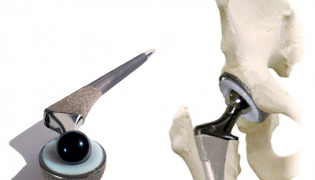
Surgery is performed in stage III and IV coxarthrosis, when conservative treatment gives minimal results or is not effective at all. The surgeon's task is to replace both the joint head and the acetabulum with artificial implants through a small incision in the thigh.
Now such operations are in progress. To imagine what awaits you if you ignore the first signs of coxarthrosis, imagine the course of the operation (in brief):
- The patient is anesthetized.
- An incision is made in the thigh, the soft tissues are cut, the nerves are pushed back.
- The joint is removed from his bed. In simple words, the doctor makes an artificial dislocation to get his head.
- The head of the joint with part of the bone is removed.
- The acetabulum is cleared.
- An endoprosthesis, an artificial joint head, is inserted into the bone, or rather "blocked. "
- An artificial acetabulum is inserted.
- The connection has been moved. The doctor checks his mobility by moving the limb in different directions.
- The wound is disinfected and sutured.
After the operation a rather long period of rehabilitation and adherence to a certain regime is required.
Traditional methods
For lovers of self-medication, it should be noted that coxarthrosis is a disease that should be treated only by a doctor. All folk methods in the form of rubbing, lotions and other "unusual things" will not lead to anything good.
However, some prescriptions of traditional medicine can be used as an adjunct to the first degree of the disease:
- Cabbage leaves.Used to relieve pain without analgesics and to relieve "twisting" of the inflamed joint. At night, tie a few cabbage leaves on your thigh after rubbing pure honey into the skin. Wrap it on top with plastic wrap and something warm. Remove the honey in the morning, rinse with cold water and repeat the compress. Repeat until the pain subsides.
- Honey ointment.Similar to the action of cabbage leaves. You just have to work to prepare it. The ratio of turnips and honey is 1/1. Turn the root vegetables in a meat grinder, add honey, stir. Pour 50 ml of vodka or alcohol. Stir again. Rub into the affected joint until the pain disappears.
- Healing baths.For cooking you need pine twigs (several large branches), turpentine turpentine (1 teaspoon), bath salt (1 kg) and washed Jerusalem artichoke tubers, cut into pieces (3-4 pieces). Fill with hot water and let it steam. When the water is pleasant for bathing, remove the branches and artichokes from Jerusalem and begin the procedure. When finished, apply an iodine net on the inflamed thigh or rub honey, put something warm and go to bed.
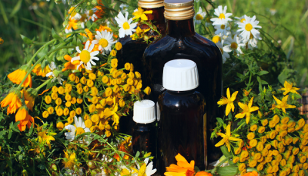
Osteoarthritis of the hip joint is a serious disease that occurs when a number of causes are combined.
In order not to become disabled, do not wait for the consequences, undergo annual examinations, at the first feeling of discomfort in the groin, visit a doctor.



































